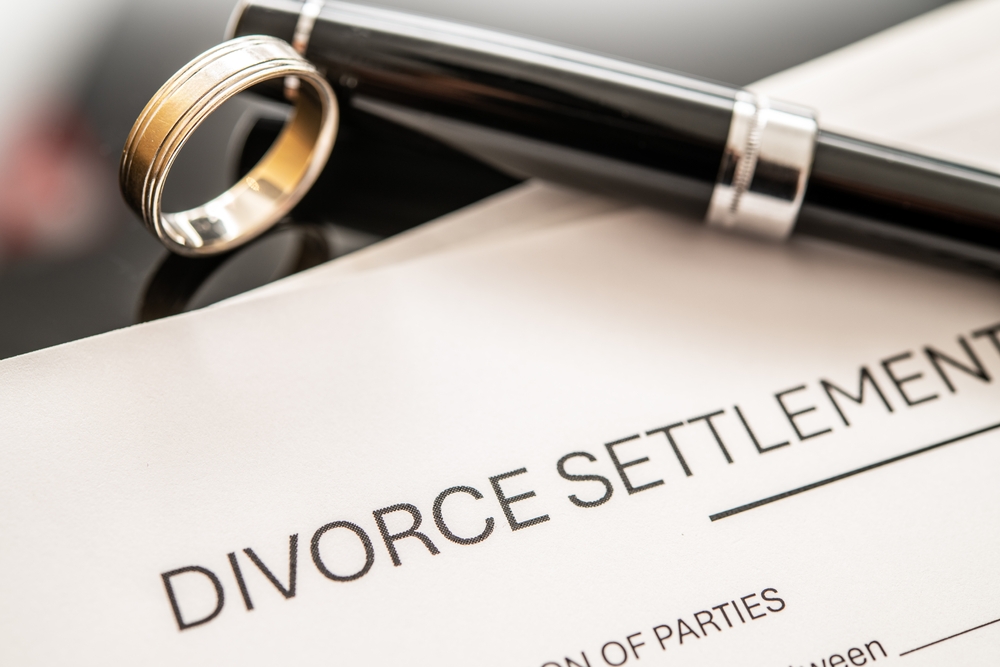The Law and Process of Uncontested Divorces in NYC

By Brian Figeroux, Esq.
Divorce is often a complex and emotionally taxing process, but not all divorces have to involve lengthy court battles or drawn-out disputes. In New York City, an uncontested divorce is an option available to couples who agree on key issues such as property division, child custody, and spousal support. This type of divorce is generally faster, less costly, and simpler than contested divorces, making it an attractive option for couples seeking an amicable separation.
This article provides a detailed analysis of uncontested divorces in New York City, covering the legal framework, eligibility requirements, the step-by-step process, the timeline, and the potential benefits and challenges of this approach. We will also highlight how legal representation can ensure that the process goes smoothly and that the divorce is handled properly.
Understanding Uncontested Divorce in New York
An uncontested divorce is when both spouses agree on all the major issues that typically arise during divorce proceedings. These issues include:
- Division of marital property and debts.
- Child custody and visitation (if applicable).
- Child support.
- Spousal support (alimony).
In an uncontested divorce, there is no need for a trial, as there are no disputes to resolve through the court. Instead, the couple presents a settlement agreement to the court, and the judge reviews and approves the divorce without much intervention.
This type of divorce is generally more cost-effective and quicker than a contested divorce, where the spouses disagree on some or all of these issues and require a court’s involvement to resolve them.
Legal Grounds for Divorce in New York
Before a couple can file for divorce, they must meet New York’s residency requirements and establish valid grounds for divorce.
Residency Requirements
Under New York law, one of the following conditions must be met to file for divorce in the state:
- Either spouse has lived in New York for at least two years before the divorce filing.
- Either spouse has lived in New York for at least one year, and the couple was married in New York, lived in New York as a married couple, or the grounds for the divorce occurred in New York.
- Both spouses are residents of New York when the divorce is filed, and the grounds for divorce occurred in New York.
Grounds for Divorce
New York recognizes both no-fault and fault-based grounds for divorce. However, uncontested divorces usually proceed under no-fault grounds, meaning neither spouse is blamed for the breakdown of the marriage.
The most common ground for an uncontested divorce is irretrievable breakdown of the marriage for at least six months. This means that the marriage has been broken beyond repair, and there is no hope of reconciliation. No specific wrongdoing or fault is required to establish this ground.
Other grounds for divorce, including fault-based reasons like adultery, abandonment, or cruelty, are less common in uncontested divorces since they are more likely to lead to disagreements and the need for a contested divorce.
Step-by-Step Process for an Uncontested Divorce in NYC
Once the couple agrees on all the major issues, they can move forward with filing for an uncontested divorce in New York. The process involves several key steps:
Step 1: Prepare the Divorce Papers
The first step in an uncontested divorce is preparing the necessary legal paperwork. The spouse initiating the divorce, known as the plaintiff, must complete several forms, including:
- Summons with Notice or Summons and Verified Complaint: These forms notify the other spouse (the defendant) that a divorce is being sought.
- Affidavit of Service: This form verifies that the defendant has been properly served with the divorce papers.
- Settlement Agreement: This is a legally binding document in which both spouses agree on the division of property, child custody, support, and any other relevant matters.
The settlement agreement is critical in an uncontested divorce. It must be signed and notarized by both parties and is submitted to the court as part of the divorce filing.
Step 2: File the Papers with the Court
Once the necessary forms are prepared, they must be filed with the county clerk’s office in the appropriate court. In New York City, uncontested divorces are filed in the Supreme Court of the county where either spouse resides.
Along with the divorce papers, the plaintiff must pay a filing fee, which is currently $210 for the Index Number (the number assigned to the divorce case). If the plaintiff cannot afford the filing fee, they may request a fee waiver by submitting an Application for Waiver of Fees.
Step 3: Serve the Divorce Papers on the Defendant
After filing the divorce papers, the plaintiff must ensure that the defendant is served with the documents. This can be done by a third party, such as a process server or a friend, who delivers the documents to the defendant. In uncontested divorces, service is typically straightforward, as the defendant is usually cooperative and expects the paperwork.
The defendant has 20 days (if served in person in New York) or 30 days (if served outside New York or by mail) to respond to the divorce papers. In uncontested cases, the defendant will typically sign an Affidavit of Defendant, agreeing to the terms of the divorce and waiving their right to contest the divorce.
Step 4: Wait for Judgment
Once the defendant has agreed to the divorce and signed the necessary documents, the next step is to submit a final set of documents to the court. These may include:
- Note of Issue: This form notifies the court that the case is ready for judgment.
- Findings of Fact and Conclusions of Law: A legal statement of the facts and conclusions supporting the divorce.
- Judgment of Divorce: The final document that, when signed by the judge, legally dissolves the marriage.
After submitting these documents, the case will be reviewed by a judge. If the judge finds everything in order, they will sign the Judgment of Divorce, making the divorce final. The time frame for this process can vary, but in uncontested divorces, it generally takes two to three months from filing to final judgment.
Step 5: Receive Final Divorce Decree
Once the judge signs the Judgment of Divorce, the plaintiff must file it with the county clerk. Both parties will then receive a copy of the final divorce decree, which legally ends the marriage. The divorce is official once this document is filed.
Timeline and Costs
The time it takes to finalize an uncontested divorce in New York City varies depending on how quickly the paperwork is filed and reviewed by the court. On average, the entire process takes two to three months from the initial filing to the final judgment, assuming there are no delays or issues with the paperwork.
In terms of costs, uncontested divorces are generally more affordable than contested divorces. While the filing fee is $210 for the Index Number, other court fees, document preparation, and legal fees may vary. Even with attorney fees, the total cost of an uncontested divorce is typically much lower than that of a contested divorce, where disputes can drive up costs.
Benefits of an Uncontested Divorce
An uncontested divorce offers several advantages over a contested divorce:
- Faster Resolution: Because there is no need for litigation, uncontested divorces move through the court system more quickly.
- Lower Costs: Without the need for court appearances, trials, or discovery, the legal fees and court costs are significantly lower.
- Less Stress: The process is typically more amicable and less stressful since both parties have already agreed on the key issues.
- Privacy: Uncontested divorces often involve less public disclosure of personal matters, as there are no contentious court hearings.
Challenges and Considerations
While uncontested divorces have many advantages, they are not suitable for every couple. There are several considerations to keep in mind:
- Complex Property Division: If the couple has significant assets, including real estate, retirement accounts, or business interests, it may be more difficult to reach a fair and equitable settlement without professional legal guidance.
- Child Custody and Support: Child custody and support arrangements can be complicated, especially if one parent seeks sole custody or if there are disagreements about the child’s best interests.
- Cooperation Required: An uncontested divorce requires both parties to cooperate and agree on all the major issues. If disagreements arise during the process, the divorce may shift to a contested proceeding, which can prolong the process and increase costs.
Why Legal Representation is Important
Even in an uncontested divorce, it is wise to seek legal representation to ensure that the settlement agreement is fair and meets all legal requirements. A knowledgeable attorney can:
- Ensure that all legal paperwork is properly prepared and filed.
- Negotiate and draft a comprehensive settlement agreement that protects your rights and interests.
- Ensure that custody and support agreements are legally sound and enforceable.
Having legal representation can also help avoid delays and complications that can arise when handling the divorce process independently.
Conclusion
Uncontested divorces in New York City offer a faster, more affordable, and less contentious path to dissolving a marriage when both parties can agree on the terms. However, even in an uncontested divorce, navigating the legal process requires careful attention to detail, particularly when it comes to filing paperwork and negotiating settlement agreements.
For those considering an uncontested divorce, it is advisable to consult with an experienced divorce attorney who can help ensure that the process goes smoothly and that all rights are protected. The Law Firm of Figeroux & Associates, which has over 25 years practicing matrimonial law, can help you navigate the process and avoid common pitfalls. To schedule an appointment, visit www.askthelawyer.us or call 855-768-8845. The lawyer you hire does make a difference!





Leave a Reply